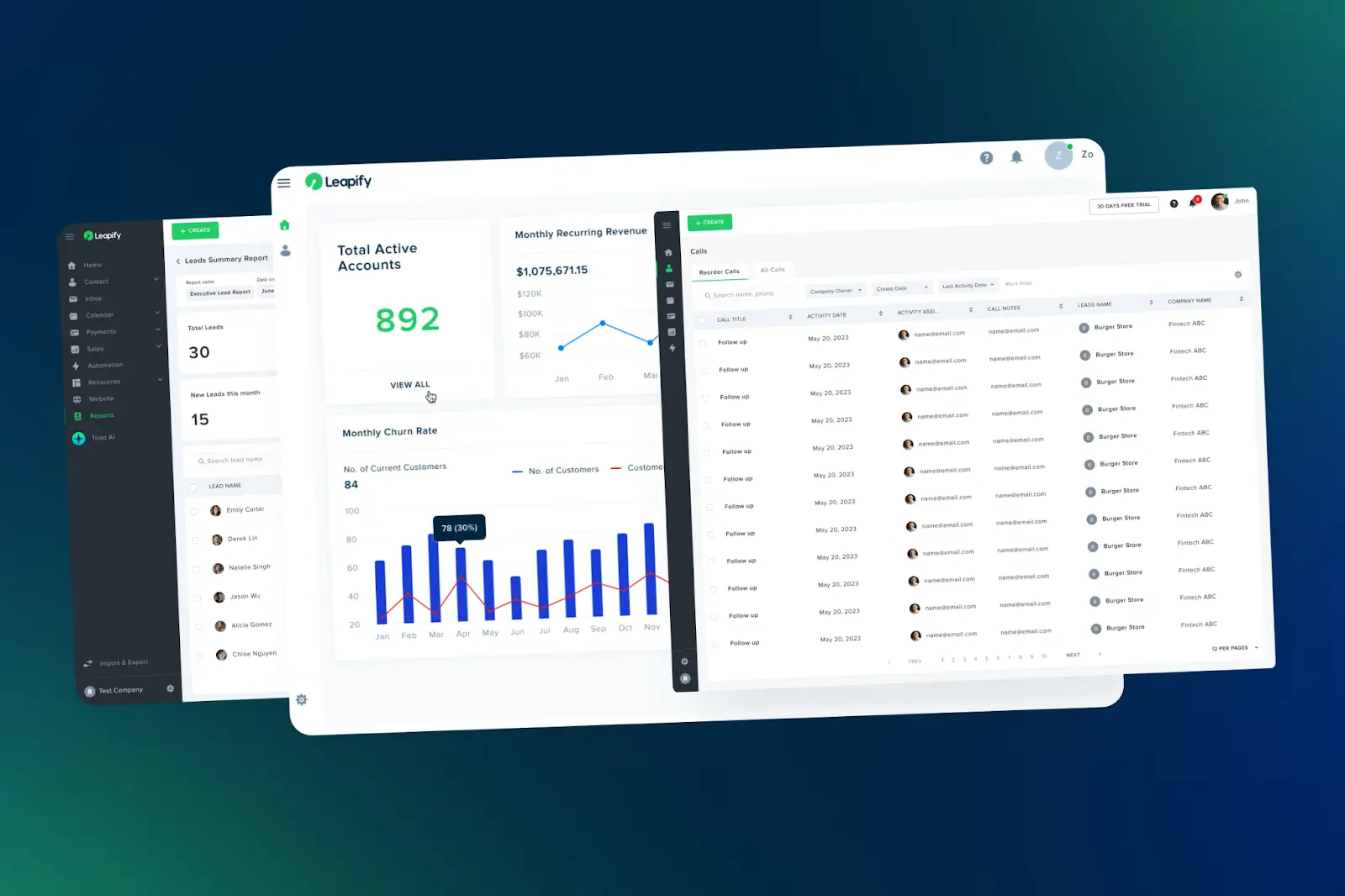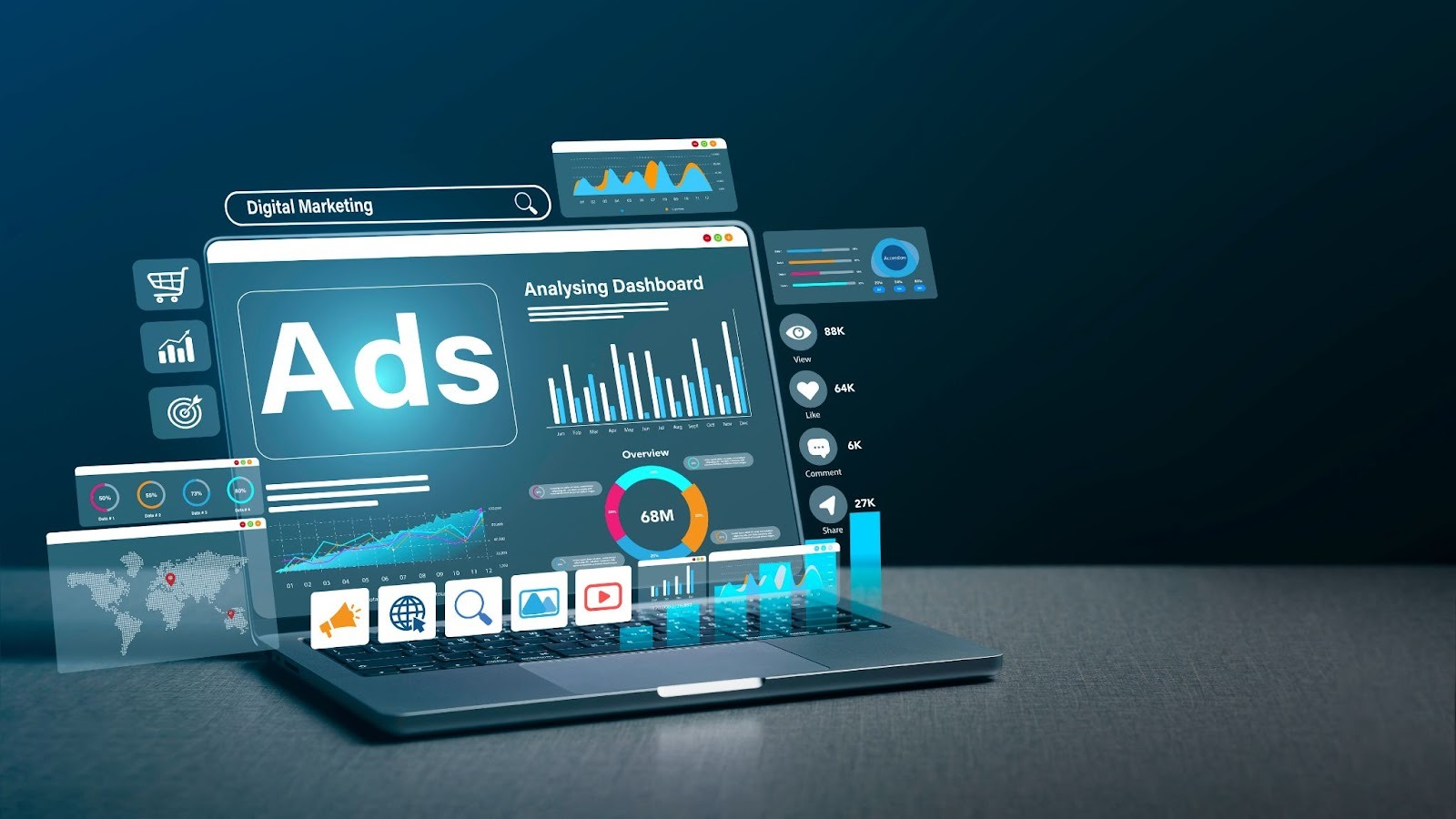
Running a small business today often feels like running five different companies at once. You’re managing sales, chasing invoices, replying to customers, posting on social media, and trying to make sense of the numbers — all while keeping the lights on. That’s why more entrepreneurs are turning to using a Small Business OS.
What Is a Small Business OS?
A Small Business OS is an all-in-one platform that helps business owners manage everything in one place, from CRM and marketing to finance and customer support. Instead of juggling multiple tools, it connects and automates your systems so you can run your business faster and more efficiently.
The Problem With Today’s Small Business Tools
If you’re like most business owners, your tech stack looks something like this:
- A CRM or spreadsheet for customers
- Gmail or Outlook for communication
- QuickBooks for accounting
- Mailchimp or Constant Contact for marketing
- A scheduling app for appointments
Each tool solves one problem but creates another: disconnection. None of them talk to each other. You end up copying data from one to another, missing follow-ups, and wasting time on manual tasks that could be automated.
This “Frankenstack” of software drains efficiency and profits. A Small Business OS eliminates that fragmentation by bringing everything together into one connected, intelligent hub.
How a Small Business OS Works
This combination of AI automation and connected tools turns a Small Business OS into more than just software — it becomes the intelligent core of your company.
Here’s how it works:
- Collects information from every interaction — website forms, calls, payments, and messages.
- Automates tasks like follow-ups, reminders, and reports.
- Analyzes data to show what’s working (and what’s not).
- Predicts next steps using AI, helping you act before problems arise.
This combination of automation + intelligence turns a Small Business OS into more than a tool — it becomes your digital team.
Features of a Small Business OS
Let’s break down the core components every Small Business OS should have — and how Leapify, an AI business platform designed for small companies, brings them to life.
CRM (Customer Relationship Management)
Every customer relationship starts here. A CRM helps you capture, track, and nurture leads — but most systems require manual follow-ups.
With Leapify, every lead is automatically contacted via call, text, or email the moment they come in. You can see every conversation, appointment, and payment history in one view.
Example: A roofing company gets a new web lead — Leapify immediately sends a text and books the estimate, without you lifting a finger.
Customer Support
Customers expect fast responses. But when you’re busy running operations, replying instantly isn’t realistic.
That’s why Leapify includes an AI Support Agent that can handle FAQs, appointment reschedules, or service inquiries automatically — 24/7.
Every conversation syncs with your CRM so you always have context.
This means no missed calls, no delayed responses, and happier customers.
Marketing
Marketing should bring customers in — not burn hours on busywork.
Leapify’s AI-driven marketing suite helps small businesses:
- Send personalized email and SMS campaigns
- Automate follow-ups after appointments or purchases
- Run seasonal promotions based on customer history
The system acts like your full-time digital marketer, running in the background while you focus on service delivery.
Finance
For many owners, bookkeeping and cash flow tracking are the biggest headaches.
A Small Business OS integrates financials directly into operations.
With Leapify’s AI Finance Agent, you can:
- Automatically follow up on overdue invoices
- Track sales and payments in real time
- Forecast upcoming revenue and expenses
You’ll always know your business’s financial health without digging through spreadsheets.
Insights
Good decisions depend on good data — but small business data is often scattered across tools.
Leapify brings it all together with AI-powered dashboards that show you:
- Which marketing channels drive the most leads
- What products or services generate the highest ROI
- When customer activity is slowing down
With real-time analytics, you can double down on what’s working and stop wasting money on what’s not.
AI: The Core of the Modern Small Business OS
AI is what makes the next generation of small business software different.
Leapify’s built-in AI Agents transform your OS from a simple tool into an active partner that helps you grow.
They don’t just automate — they think ahead:
- Sales Agent: Predicts when a lead is likely to close and follows up automatically.
- Marketing Agent: Suggests promotions based on seasonality or purchase patterns.
- Finance Agent: Flags irregular cash flow before it becomes a problem.
- Support Agent: Handles 24/7 customer communication.
It’s like having a digital staff running your business — minus the payroll.

Who Can Benefit From a Small Business OS
Almost every small business can — but here are a few examples:
- Home Services: Automate appointment scheduling, reminders, and follow-ups.
- Medical & Wellness: Manage patient communication and recurring memberships.
- Automotive: Capture service requests and upsell repeat customers.
- Real Estate: Track leads, manage showings, and follow up automatically.
If your business relies on leads, appointments, or repeat clients — a Small Business OS will save hours every week.
Small Business OS vs. Traditional Software
Lead Follow-Up
- Traditional Software: Manual follow-up required.
- Small Business OS: Follow-up is fully automated.
Communication
- Traditional Software: Scattered across multiple apps.
- Small Business OS: Unified in one centralized inbox.
Marketing
- Traditional Software: Requires multiple tools.
- Small Business OS: Centralized with AI.
Reporting
- Traditional Software: Disconnected and hard to analyze.
- Small Business OS: Unified dashboards for real-time insights.
Finance
- Traditional Software: Manual reconciliation and data entry.
- Small Business OS: Automated and predictive financial tracking.
Scalability
- Traditional Software: Limited as the business grows.
- Small Business OS: Built for long-term growth and expansion.
A Small Business OS doesn’t replace your tools — it connects and enhances them.
Signs You Need a Small Business OS
Wondering if it’s time to upgrade? Here are telltale signs:
- You’re using more than three apps to manage daily operations
- You forget to follow up with new leads
- You don’t know which marketing campaigns actually drive sales
- You spend hours chasing invoices
- You make decisions based on guesswork instead of data
If you said “yes” to any of these, your business is ready for an operating system.
The Future of Small Business Management
AI is changing how small businesses operate.
In the next few years, we’ll see a shift from reactive to predictive management — where systems like Leapify tell you what to do before you even notice a problem.
Imagine:
- Your system reminds you that bookings are trending down next week.
- It suggests running a promotion and sends it automatically.
- Then it tracks conversions and updates your forecast.
That’s where small business management is headed — and it’s happening now.
FAQ
Q: What does a Small Business OS actually replace?
It replaces multiple tools: CRMs, email platforms, invoicing systems, and support apps — by connecting them into one unified platform.
Q: Is it complicated to use?
No. Modern OS platforms like Leapify are designed for non-technical business owners. You can set it up in minutes.
Q: Does it integrate with existing software?
Yes. Most Small Business OS platforms connect with tools like QuickBooks, Google Calendar, and major payment providers.
Q: What makes an AI-powered OS different?
It learns from your data and acts proactively — predicting trends, sending reminders, and automating decisions that used to take hours.
Conclusion
A Small Business OS isn’t just another tool — it’s a smarter way to run your business.
By uniting your CRM, marketing, finance, and support under one roof, it saves time, increases productivity, and helps you make data-driven decisions.
Whether you run a local service company or an online brand, the future of business management is clear: one platform, powered by AI, that keeps your entire operation running seamlessly.
If you’re ready to simplify your tech stack, streamline your workflow, and work smarter —Leapify is your Small Business OS.



